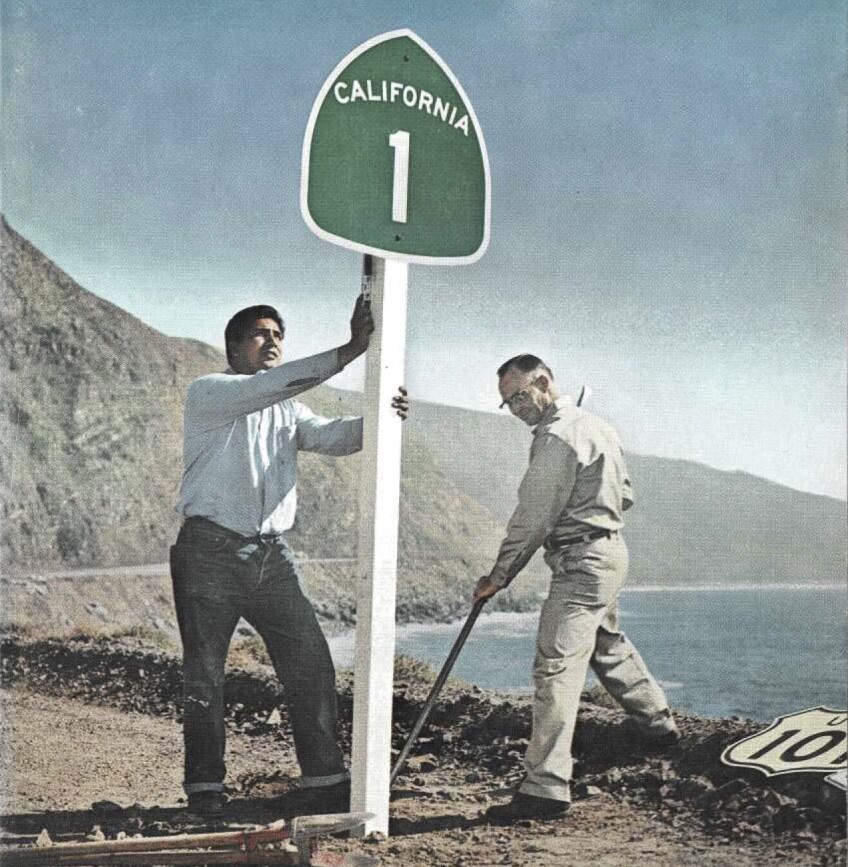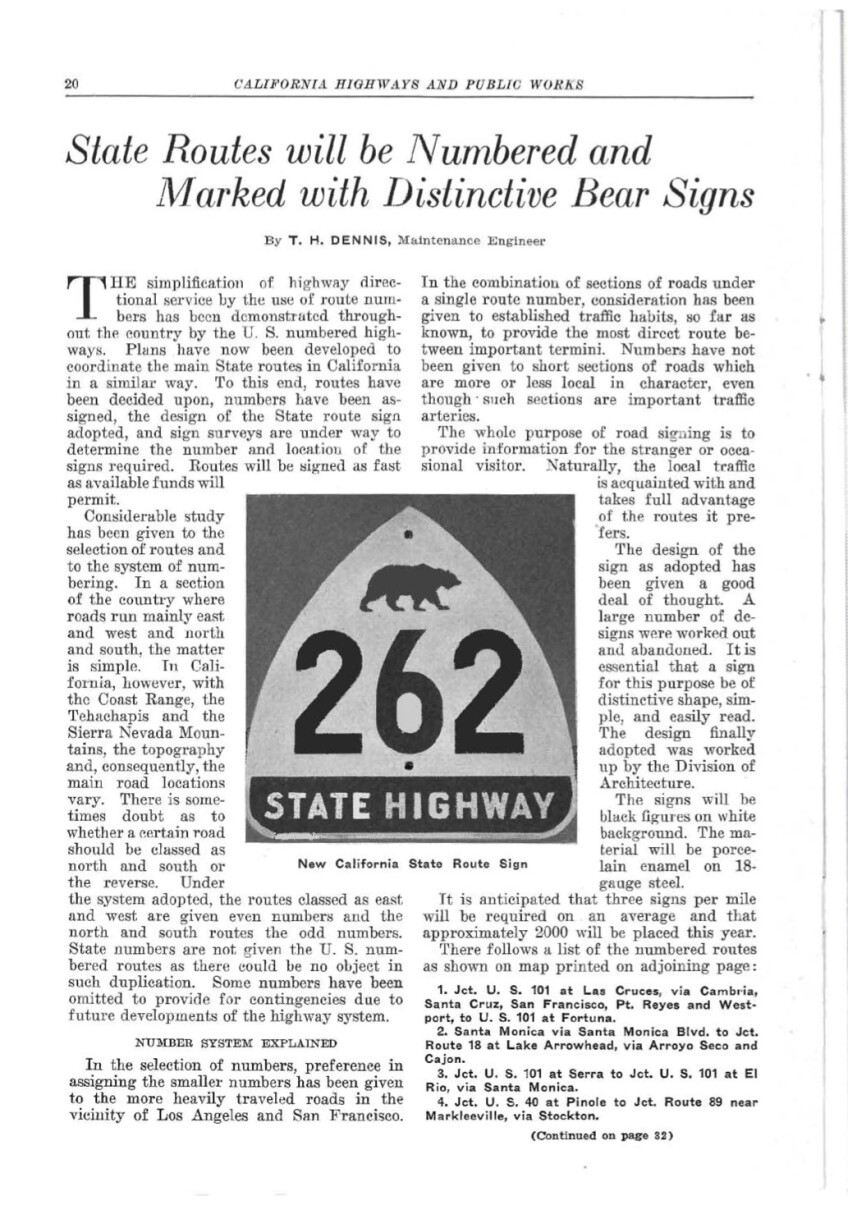What Does California's State Highway Shield Symbolize?

California's state highway markers – those green, numbered signs placed along local freeways and rural routes across the Golden State -- are so familiar a feature of the automotive landscape that it's easy to overlook their symbolism. But the shield accomplishes a neat trick. At once it points ahead and back – forward toward some spatial destination, but also back toward a temporal point of origin.

Its shape mimics the spade carried by Forty-Niners into the foothills and sold by the opportunistic merchants who made the real fortunes of the California Gold Rush.
When state highway officials adopted the miner's spade as an emblem of their system in 1934, did they fancy themselves successors to the Forty-Niners? By pioneering auto travel through California's rugged terrain, they were, after all, following the figurative (and sometimes literal) path of those gold-fevered newcomers.
But if so, they chose to celebrate a complicated legacy. Tales of prospectors' grit or shopkeepers' cunning often ignore the profound environmental and social costs of the Gold Rush: forests felled and streams choked with silt; Indians displaced and enslaved; Chinese, African-American, and other nonwhite miners excluded from the diggings.
Its symbolism was even more perplexing from 1934-57. In those years, the silhouette of a grizzly bear – an animal the Forty-Niners and their descendants had hunted to extinction by 1922 – strode atop each route number.
A 1957 design refresh erased the bear. Another in 1964 made the spade green (for visibility reasons; blue-and-gold was a close runner-up) and softened its upper point, somewhat obscuring the historical reference.
Today, California's is the only non-rectangular state highway shield.



Further Reading
Sackman, Douglas Cazaux. "Nature and Conquest: After the Deluge of '49." In A Companion to California History, edited by William Deverell and David Igler, 175-191. Malden, MA: Wiley-Blackwell, 2008.